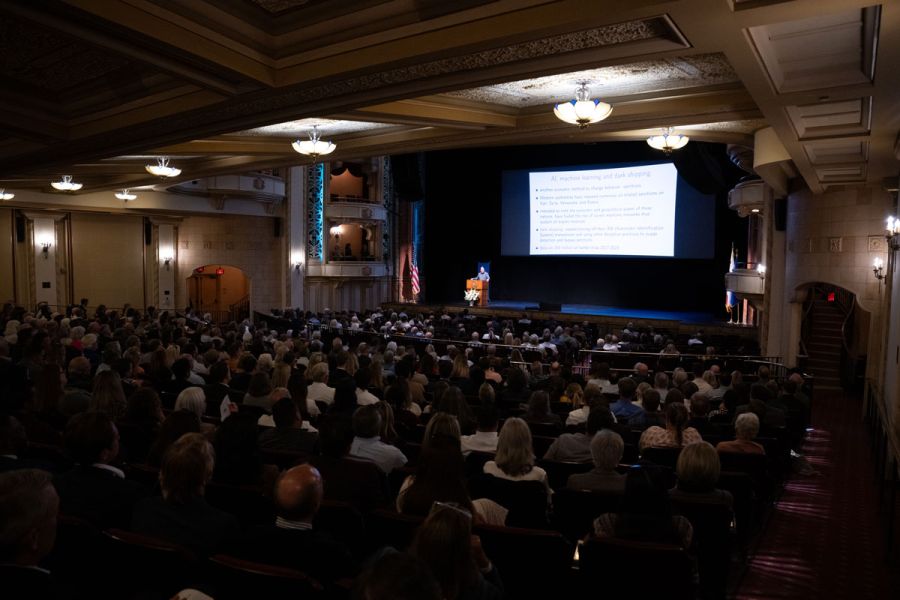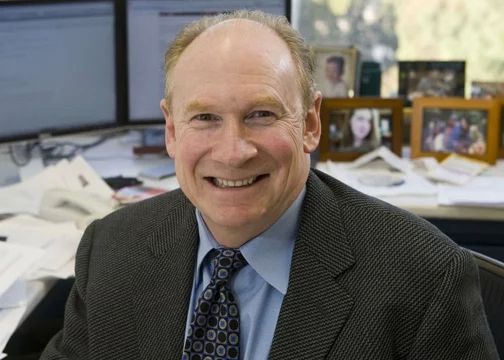

A record number of attendees gathered at the Granada Theatre on State Street in Santa Barbara for the 2025 Santa Barbara County Economic Summit hosted by the UCSB Economic Forecast Project, of which American Riviera Bank was proud to be a Gold Sponsor. This year's event included talks from economists and former members of the Federal Reserve sharing insights on the economy, California’s housing crisis, trade policies, and more.

Peter Rupert, Director of the UCSB Economic Forecast Project, delivered the Santa Barbara County Economic Report with a focus on GDP trends and local economic indicators. Rupert highlighted that real GDP, our real purchasing power, sharing that “the amount of stuff we are able to buy" has maintained an average growth rate of about 2% annually.
For Santa Barbara County specifically, Rupert expressed concern about slow employment growth. While retail, leisure, and hospitality sectors have rebounded nationally since COVID, Santa Barbara County continues to see declining employment in these areas—a trend that has persisted since 2000.
Rupert noted that an inverted yield curve, which typically signals a recession, was present in 2023. Historically, short-term government bond yields being higher than long-term yields has been a reliable predictor of recessions, though it is not infallible. Despite the occurrence of an inverted yield curve in 2023, he assessed that based on current data, there's only a 0.8% probability that the economy is in recession, and that GDP fell only slightly in Q1 2025, before recent tariff implementations.
A timely overnight development set the stage for much of the summit's discussion on trade. Just before the event, a temporary deal had been struck between the United States and China that boosted the stock market—reducing extra tariffs to 30% on Chinese goods and 10% on US imports.
To illustrate trade impacts locally, he started the summit with a striking visual demonstration of global trade complexity. He showcased his Ace Rivington jeans made from California cotton that had been shipped to Italy to be developed into denim, then transported to Mexico for final production. Using this example, and other local brands he was wearing, Rupert gave a clear visual of the potential local impact tariff policies could have long-term on the Santa Barbara region. He emphasized that many businesses tend to adopt a wait-and-see approach during tariff negotiations given the challenges and complexities of changing operations.
George Alessandria, Professor of Economics at the University of Rochester, presented "Trade Policy and the Economy: Past, Present, and Future," explaining that tariff negotiations are typically lengthy processes that all presidents engage in to some degree. He noted that historically, tariffs reached their highest levels after the Civil War as a mechanism to pay down national debt.

Alessandria outlined the effects of tariffs: they raise import prices, potentially shifting demand away from these goods, and can depreciate exchange rates. He pointed out that in anticipation of tariff changes under the new administration, many consumers and businesses have been accelerating purchases of foreign goods. He also noted that this April alone, tariffs generated $16 billion in revenue.
Jim Bullard, Professor of Economics at Purdue University and former President of the Federal Reserve Bank of St. Louis, offered insights from a central banker's viewpoint in his talk "U.S. Economy & Monetary Policy."

Bullard noted that despite a Q4 2024 GDP growth of -0.3%, the economy had good initial conditions with strong consumption as the new administration took office and that financial markets weren't expecting significant interest rate changes. He also made note of Wall Street’s responses to the administration's tariff policies.
Drawing parallels to the 2018-2019 trade disputes between the US and China, Bullard explained how that period's heightened uncertainty restrained global investment and slowed US economic growth, eventually prompting the Federal Reserve to lower policy rates. He suggested this might serve as a template for what to expect in 2025, while dismissing concerns about the dollar losing its reserve currency status.

UCLA Economics Professor Lee Ohanian delivered a more regional presentation, "How California's Homelessness and Housing Problem Became Intractable," highlighting the state's severe housing affordability issues.
He shared that California's median home price stands at $884,000—115% higher than the national average of $410,000. As a result, only 16% of California households can afford to buy a home. The situation in Santa Barbara County is even more extreme, with a median home price of approximately $1.4 million, making homeownership attainable for only 8-12% of county residents.
While not directly part of the UCSB Economic Forecast program, this data plays an important role in why American Riviera Bank leverages their strategic partnerships to help first time home buyers—such as its collaboration with the Federal Home Loan Bank of San Francisco. Through the WISH (Workforce Initiative Subsidy for Homeownership) Program, American Riviera Bank is providing down payment assistance grants to assist eligible low- to moderate-income first-time homebuyers in Santa Barbara and San Luis Obispo Counties with up to the annual maximum FHFA subsidy limit, which is $32,099 in 2025. With $12 million available through this year’s program, the Bank is committed to expanding access to affordable housing.
Contrary to popular belief, Ohanian explained that population growth isn't the primary culprit behind skyrocketing housing costs. California's population grew from around 7 million in the 1940s to 20 million in the 1970s, but has only increased by about 2% in the last decade.
Instead, Ohanian believes regulatory burdens have dramatically increased building costs. He cited examples like the California Environmental Quality Act (CEQA), which, while intended as an environmental protection measure, significantly delays development. Similarly, he noted that despite Sacramento passing ~100 new housing laws in recent years, these policies haven't reduced construction costs, resulting in fewer building permits.
Ohanian proposed several solutions:
On homelessness, Ohanian reported a 60% increase since 2015, with official counts of 186,000 homeless individuals likely underestimating the true figure of around 400,000. Despite $37 billion spent on homelessness since 2019, he criticized state and federal programs for lacking oversight and accountability.
His recommended approach to homelessness includes prioritizing psychological and substance abuse treatment over housing to help people overcome dependencies before reuniting with families, and improving K-12 education as a long-term preventative measure.


For more information on the 2025 Economic Outlook, presented by the UCSB Economic Forecast Project, visit efp.ucsb.edu.
Previous: 2025 Teach Children to Save Next: SBA AI Insights & Resources